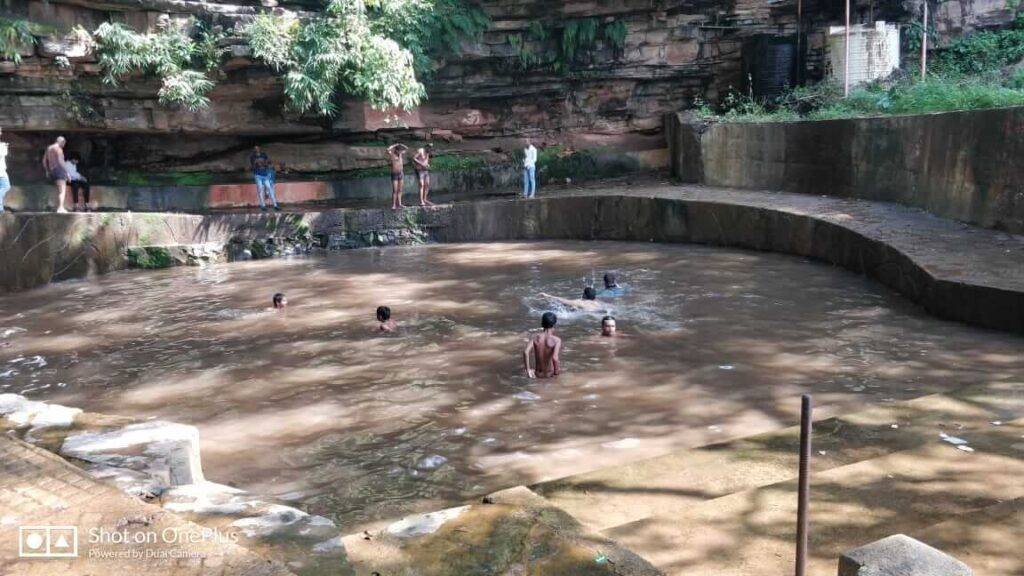Bundelkhand is a region located in central India, spanning across the states of Uttar Pradesh and Madhya Pradesh. The history of Bundelkhand is rich and diverse, with influences from various kingdoms and dynasties that have ruled over the region throughout the centuries.
In this blog post, we will delve into the historical background of Bundelkhand, exploring its origins, key events, and notable figures. we will take a closer look at the historical events that shaped Bundelkhand and its people.

Geography and Early History of Bundelkhand
Bundelkhand is located in the northern part of central India and is bordered by the states of Uttar Pradesh and Madhya Pradesh. The region is characterized by its rugged terrain, with hilly forests and rocky outcroppings. The main rivers that flow through the area are the Betwa and the Ken, which have played a crucial role in the region’s history.
The earliest known history of Bundelkhand dates back to the Mahabharata era when the region was ruled by the powerful Kshatriya dynasty of the Chandelas. The Chandelas were known for their patronage of the arts, and during their reign, several temples and architectural structures were built in the region. One of the most famous of these is the Khajuraho Temple Complex, which is now a UNESCO World Heritage site.

The history of Bundelkhand is way older than most people know, Spanning from the ancient kingdoms of the Mahabharata era to the struggles for independence during the British colonial period, the region has seen its fair share of political and cultural changes.
Chronological history of Bundelkhand
Pre-Ramayana period history of Bundelkhand
Evidence of early man living in Bundelkhand is found in the form of rock paintings at many places in the Patha region of the Chitrakoot district, and in Sagar, Chhatarpur, Panna, and Datia districts. The story of sage Agastya crossing the Vindhyan hill range can be read as an account of the migration of Hindu religious priestly figures into jungle areas of central India inhabited by tribal populations.
Ramayana Period history of Bundelkhand
Bundelkhand had a very rich history starting from pre-Ramayana and Mahabharata time as mentioned in mythological books, Ramcharitmanas by Tulsidas and Mahabharata by Ved Vyasa.
Many accounts in the Ramayana describe the Chitrakoot forests where Ram, Sita, and Lakshman are believed to have spent 12 years in exile. Valmiki, who wrote the original Ramayana is believed to have had an ashram in the Chitrakoot district.
Tulsidas who wrote the Hindi version of Ramayana, The Ramcharitmanas, lived in Chitrakoot, Bundelkhand.

Mahabharata Period Bundelkhand history
In the Mahabharata, there is a mention of the Chedi Kingdom, whose boundaries extended from river Betwa in the west to river Yamuna in the north. This is similar to the area that is present-day Bundelkhand. The capital of this kingdom was Chanderi and the ruler was Shishupal. Vyas is believed to have composed the Mahabharat in Kalpi, in the Jalaun district.

When Pandavas killed Kauravas during Mahabharata, they were cursed for killing people in their own Gotra. To get out of that curse, someone suggested to Yudhishthira that he can clear the curse by taking bath in ArthMarshan Kund (In Dharkundi) on Ravi saptmi (7th day which is Sunday in 15 days moon cycle). Dharkundi is near Chitrakoot (Bundelkhand)
4th Century AD
Vakatakas were important rulers of the region and controlled Panna and Satna, till the 4th century AD. Urban settlements with a strong money economy emerged between the 3rd century BC and 3rd century AD, as evinced from a large number of coins from this period, unearthed at Eran, around 60 km northwest of Sagar town.
4th-6th Century AD
The Gupta empire started to disintegrate around the end of the 5th century AD, when they were challenged by Hunas from northwest India, who overran a great part of western India, up to Eran. Eran, which is referred to as Erikana in coins of this period, appears to have been a major settlement for many centuries, up to the period of the imperial Guptas, who ruled from 4th century AD onwards.
The Guptas controlled the whole of Central India. Parivrajaka and Uchhakalapas, of the Gupta dynasty, ruled different parts of Bundelkhand.
Harshavardhan’s rule extended from the Himalayas in the north to the Narmada in the south. One of the most well-known and most representative temples of Gupta temples is found in Deogarh, around 30 km from Lalitpur, close to the banks of the Betwa.
8th Century AD -history of Bundelkhand
The Gurjara-Pratihara were rulers of the Malwa region and at one point their territories were larger than those of the Gupta Empire.
The Kalchuris of Tripuri, the Parmars of Malwa, and the Chandelas of Bundelkhand emerged as rulers after the decline of the Gurjara-Pratihara dynasty.
9th Century AD -history of Bundelkhand
Nannuk established the Chandela dynasty. Nannuk’s grandson, Jejjak renamed the state Jejjakbhukti.
10th-13th Century AD – history of Bundelkhand
Chandela Dynasty – King Dhang was the greatest ruler of the Chandela dynasty. His kingdom extended from Gwalior in the north to Vidisha in the south and to Allahabad in the northeast.
Most of the Khajuraho temples were built during the reign of King Dhang and his father, Yashovarman Chandela. Hammirvarman was the last of the Chandela kings.
14th-16th Century AD – history of Bundelkhand
Bundelkhand was a province under the Moghul empire in India during the sixteenth and seventeenth centuries, ruled directly by their vassals, the Gond kings of Garha Mandla and the Upper Narmada Valley. The Bundelas were (and still are) Chhatri Suryanvanshi Rajputs by origin.
In the early fourteenth century, their earliest known ancestor, Sahanpal Bundela, first came down into southern India, along with the armies of the Rajput Parmara and Chauhan kings and captured the regions forming what we now know as Bundelkhand (in the present states of Madhya Pradesh, Chattisgarh, and Uttar Pradesh). The Bundela clan settled down in this region as vassals of the other two Rajput clans.
Bundela Dynasty – The Bundelas emerged victorious after the decline of the Chandela kingdom. In 1531 AD, Rudrapratap Bundela made Orchha his new capital. Clashes between the Mughals and Bundelas started during the reign of Madhukarshah Bundela. Chhatrashal Bundela is considered one of the greatest Bundela kings. He fought the Mughals for the freedom of the Bundelkhand region. He was helped by Bajirao Peshwa in his struggles against the Mughals.
Medieval Period – history of Bundelkhand
During the medieval period, Bundelkhand was ruled by a number of different dynasties, including the Pratiharas, the Palas, and the Rajputs. These dynasties were constantly fighting for control of the region, and as a result, the region was in a state of constant turmoil.
One of the most significant events of this period was the rise of the Bundela dynasty, which was founded by Raja Rudra Pratap Singh in the 16th century. Under his rule, the Bundelas emerged as a powerful force in the region, and their kingdom was known for its cultural and architectural achievements.
The Mughal Period -history of Bundelkhand
The Mughal period, which lasted from the 16th to the 18th century, saw the expansion of the Mughal Empire into Bundelkhand. The Mughals were able to conquer the region relatively easily, and as a result, the region came under the control of the Mughal Empire.
During this period, the region saw significant growth in trade and commerce, and many cities in Bundelkhand became important centers of trade. However, the Mughal rule also brought about the destruction of many temples and architectural structures, as the Mughals were known for their destruction of Hindu temples.
British Colonial Period -history of Bundelkhand
The British colonial period saw the decline of the Mughal Empire and the rise of the British East India Company. The Company was able to establish control over the region relatively easily, and as a result, Bundelkhand became a part of British India.
During this period, the British implemented a number of policies that had a significant impact on the region. One of the most significant of these was the Permanent Settlement Act of 1793, which led to the alienation of land from the local population and the rise of the zamindari system. This system had a significant impact on the region’s economy and society, and it is still felt to this day.
Independence and Post-Independence history of Bundelkhand
Bundelkhand played a significant role in the struggle for independence from British rule. The region was home to several prominent freedom fighters, including Raja Rammohan Roy and Mahatma Gandhi.
After India gained independence in 1947, Bundelkhand became a part of the newly formed state of Uttar Pradesh. The region, however, remained relatively underdeveloped, with a lack of industrialization and infrastructure.

Conclusion
Bundelkhand has a rich and diverse history, shaped by the various kingdoms and dynasties that have ruled over the region throughout the centuries. From the earliest known inhabitants to the British period, the region has witnessed several key events and notable figures. Despite its challenges, there have been efforts in recent years to develop the region and bring it up to the same level as the rest of the country.
Frequently asked questions on Bundelkhand
Who are the rulers of Bundelkhand
Bundelkhand is a region located in central India, and has been ruled by a number of different dynasties and rulers throughout history. Some of the most notable historical rulers of Bundelkhand include the Chandelas, the Bundelas, the Marathas, and the British. In modern times, Bundelkhand is divided between the Indian states of Uttar Pradesh and Madhya Pradesh, and is governed by elected officials in those states.








